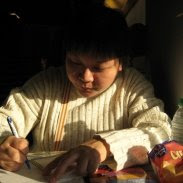Topic: Congruency - Introduction
Level: Secondary 1
Duration: 45 minutes
Learning Objectives:
Students will learn that
- Congruent figures are of the same shape and size
- Reflected images are congruent
1. Using the following real world example, elicit students prior knowledge to "Congruency":
2. Based on the suggestions, draw out from students the common deciding factor: "Same Shape, Same Size".
3. Introduce the term "Congruent".
1. In pairs, students are given a pairs of picture cards to classify into examples and counter-examples of Congruent figures:
Examples of pairs of picture that illustrate congruence will have
Examples of pairs of pictures that illustrate congruence
3. Elicit from students what are the characteristics presented in each pair of pictures that help them classify the pictures into the examples and counter-examples.
4. Highlight to students that "Images of the same shape, size & colour; but reflected (i.e. flipped vertically/horizontally)" are also congruent.

 Example 2: Using the "Pop Art" effect
Example 2: Using the "Pop Art" effect
Part (II): Using Number to explain their understanding
Using the square grids (created with Number), students 'explain' why the pictures they take illustrate "Congruence".
1. Students will insert the images into a Number template.
2. Using the gridlines (in Print View), they show the congruence within each image by positioning the image such that the grid line divides into into 2 equal halves (reflection) or into 4 quadrants where all the images are exactly the same (identical replicates).

3. Using the grid, students are able to count and describe that the corresponding sides of the image are of the same shape and size.
4. Students could choose one of the images to be posted in the class blog (coupled with illustrations) to share with their peers.
